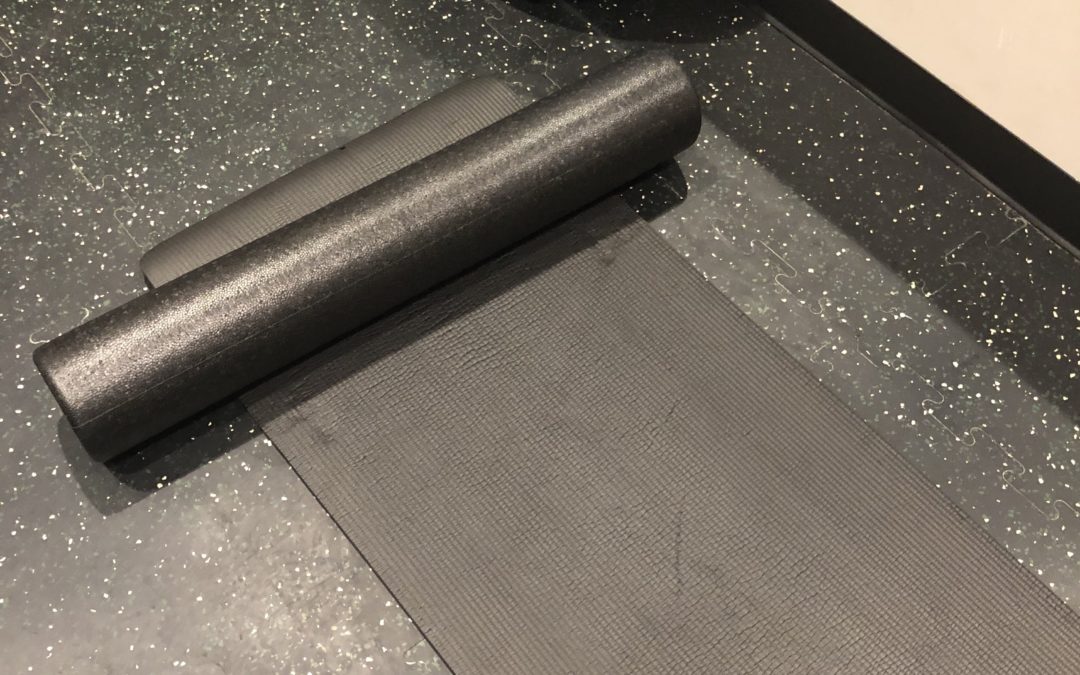On that note, I’d like to share a technique that I’ve recently incorporated into my routine, which I’ve found really beneficial. You can even use this if you aren’t a gym-goer, in the comfort of your own home (lots of people do it in front of the TV!). Following some advice, I started using a simple foam roller (if you don’t know what one is, some examples are pictured here), as part of my warm-up and cool-down routine. In more scientific terms, this is known as “self-myofascial release”. It’s a relatively new trend in the world of sports medicine, increasing in popularity over the last couple of decades. The theory behind why this is so great for muscles, particularly any tender spots, is as follows: Certain muscles in your body can develop “knots” in them or become overactive (i.e. the muscle is shortened). As you roll over muscles with the foam roller—whether it be your back or extremities—you are helping to loosen them and increase blood flow. When you feel a tender or tight spot: Hold this for at least 30 seconds. This is long enough to allow a process called autogenic inhibition to occur, when the tension-sensing Golgi tendon organs in your muscles, send inhibitory impulses to the muscle fibers, causing the muscle to relax. You should be able to feel it as the process of autogenic inhibition kicks in, and the area loosens.
This technique of self-myofascial release can be used as I use do (as a corrective static warm-up and cool-down exercise), but can also be used on its own for sore muscles, even if you don’t regularly work out. I will let you research on your own how to roll correctly on different parts of your body and target certain muscle groups (for instance, the latissimus dorsi is just below your underarms). There are a ton of informational videos available online on sites such as YouTube—and it goes without saying, always speak to a trained professional first if you have a more specific problem or are at risk of injuring yourself. It’s also a well established technique that is used to correct muscle imbalances due to overactive muscles, found in certain postural abnormalities such as lower crossed syndrome and pronation distortion syndrome.
To emphasize just how beneficial foam rolling is, it’s an integral part of the workout that American Football superstar Tom Brady promotes. Living in Boston, needless to say we hear a lot about Brady all the time (I’m going to be sensitive to the fact that this article may have a wide readership, but in this part of the world we call him the GOAT). For Tom Brady to remain so competitive given his age is nothing short of remarkable. His healthy lifestyle book, The TB12 Method, also highlights his mostly vegetarian/vegan diet. Brady’s workout regimen is big on improving muscle flexibility, and a core part of this includes rigorous muscle loosening actually using vibrating foam rollers. You can read in more detail about his TB12 workout here in a recent Boston Globe article, and any member of the public can drop by his fitness center in Boston’s Back Bay, to give it a go.
So if you have never used a foam roller before, you can try one at your next gym visit, or consider purchasing one to use at home. They come in different shapes and sizes (some are harder with rugged surfaces). Start with a simple foam one. It’s done me a lot of good, and it may be just what the Doctor ordered to loosen those tight muscles before and after your long day at work.

Suneel Dhand is a physician, writer and speaker. He is Co-Founder at DocsDox.
Follow me on:
YouTube: Suneel Dhand
Instagram: suneeldhand
Twitter: @SuneelDhand
Facebook: Dr Suneel Dhand

